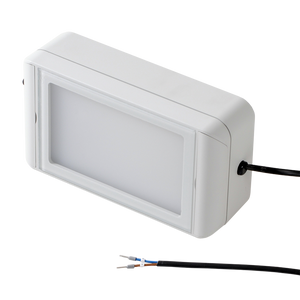LEDs are now the preferred lighting soure for industrial x-ray film viewers, as they produce a bright, uniform luminance that is perfectly suited to x-ray film viewers.
Historically, incandescent lamps such as photo-floods, were used as a light source that produce more heat than light. Viewers were large and heavy to accommodate cooling. They ran hot, and bulbs burned out frequently.
Over the years, other light sources (such as quartz halogen projector bulbs) have been used that offered some nominal improvements. Compact fluorescent tubes were introduced in the past decade. They were a breakthrough, as they produced little heat and allowed illuminators to be made more compact.
In addition to LEDs pure white light, the life expectancy of LEDs is around 40,000+ hours, eliminating the need to stock spare incandescent bulbs that are becoming more expensive, harder to find, and eventually will become obsolete.
LEDs produce virtually no heat, so LED Film Viewers can be made much more compact since there is no need for a large fan. Plus, the distance of the LED to the viewer screen is much less than that required for incandescent lamps. For example, a 14″x17″ viewer that used to have an approximate depth of 12 inches is now approximately 4 inches.
Uniformity of illumination is greatly improved as LEDs are distributed evenly across the viewer window. Therefore, the intensity near the edges of the view window is more similar to the intensity in the center of the window.











